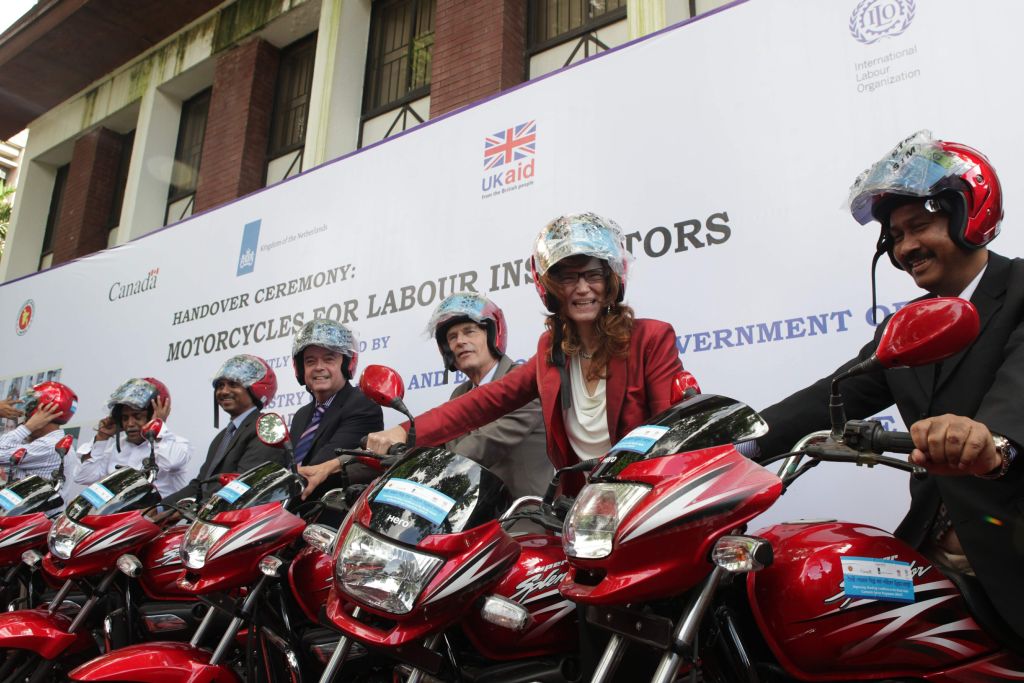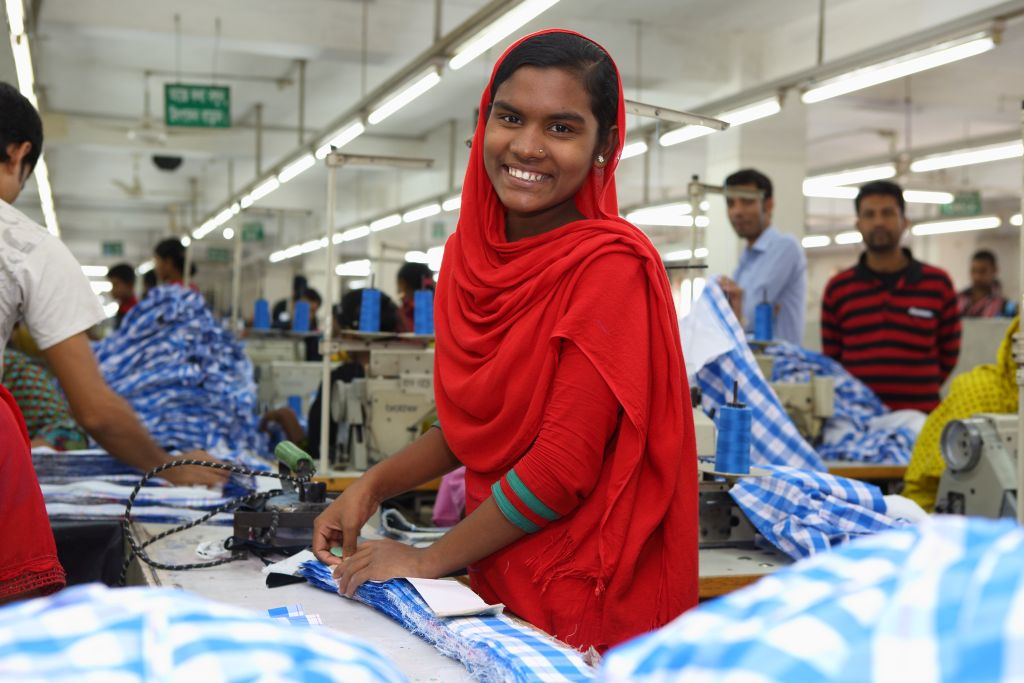Repon Chowdhury and Taherul Islam
of the Bangladesh Occupational Safety, Health and Environment Foundation
(OSHE), shared this story from Rebeka, age 20, a survivor of the Rana Plaza
building collapse of April 24.
Rebeka was a sewing-machine
operator for RMG Factory Ether Tex Ltd. on the sixth floor of the Rana Plaza
building when it collapsed. She was rescued from the building two days later.
On April 24, the building collapsed
when a generator was started. Rebeka remembers: "My mother and I were
working. I was [trying] to finish my hour-based work that was from 8 a.m. to 9
a.m. After a while, my mother came to me and told me that she needed to go home
for breakfast. Then I replied, 'Please go alone. I need to finish two more
pieces.' Then my mother started to go home and I just started my work again
after looking at the clock. All of a sudden, the whole building vibrated and
collapsed."
Immediately after the accident,
Rebeka started to look for her mother but could not find her. She was pinned
under a heavy weight. Seven members from Rebeka's family worked there. Among
them, four are missing, one died and two others – including Rebeka – are alive
with traumatic, life-altering injuries.
"I was in the dark for 2
days and was not in a position to realize whether it was day or night,"
Rebeka remembered. "The dead bodies of my colleagues were everywhere. I
was very much thirsty. I could not stop bleeding, I passed two days without
food and water until suddenly, I noticed that someone was shouting, 'Anyone
alive here?'
"Immediately, I tried to
draw his attention and shouted, 'Yes, I am alive here.' The rescuer came to me
and asked about my condition. First thing, I requested a bottle of water, and
the rescuer went back and brought some water for me. But there was no way to
reach the water.
"After a while, that person
created a path using a drill machine and gave me a water bottle and at that
time, he started a rescue operation to save my life. I said, 'My legs are under
a big piece of broken building.' Observing the situation, he said, 'I have to
cut off your legs to get you out of this trap. Do you agree?'
"At that time, I informed
him of my husband's cell number. He went back and contacted my husband. After
some time, my husband and elder brother came. They all discussed and decided to
pull me out from the debris without cutting my legs off. Then they started to
rescue me using drill machine and rod cutter. Almost all tendons of my two legs
were damaged while the rescuers were pulling me out. After being rescued, I was
sent to Combined Military Hospital (CMH) and then referred to the National Institute of
Traumatology and Orthopaedic Rehabilitation (NITOR), Dhaka. I had to lose my
two legs for keeping other parts of my body," Rebeka added.
She recalled that all of the
garment workers were forced to report to work on the day of the accident even
though the local administration had declared the building unsafe. The workers
saw the vulnerable condition of the building.
"We demanded to leave for
few days but the authority did not approve this," said Rebeka. "The
authority rather told us to come tomorrow on time. On that day, the owner of
the building – Rana – and the owners of the factories and their representatives
forced the workers to enter into the building and to work. They told us, 'No
problem, everything is OK.'
"'If you do not go for work,
you would not get your salary,' the authorities of factories said. We had no
other alternatives but to start work in spite of safety risks," said
Rebeka.
She continues to receive medical
care and is worried about her future livelihood options. Rebeka has not yet
been compensated for her injuries as per the labor law. She received 10,000 Bangladeshi
taka (BDT) and a sari (a long garment to cover her body) from the government
when she first was injured. The garment-factory owners organization BGMEA has
paid her monthly salary of 8,500 BDT (approximately $109) with overtime. She
also received some financial support and other material support from some
voluntary organizations.
Recently, the government gave
Rebeka a savings-bank-account certificate of 1 million BDT (approximately
$12,850). Rebeka and her family will receive 10,000 BDT per month from the
savings account for 5 years.
Rebeka now been admitted to
Government Orthopaedic Hospital in Dhaka. She has been receiving treatment
there for 2 months. The government is paying all of her medical costs. However,
the doctors there are not as skilled and do not have the same resources as the
doctors in the beginning of treatment. She will have to remain in the hospital
for a long time. She will not return to normal life as it was before the
accident. She lost her legs, so now her choice is artificial legs or a
wheelchair.
Rebeka has no children and her
husband has no regular income. At present, he is physically ill and Rebeka's
older brother is taking care of her. Rebeka's husband said it would be better
if he had the opportunity for a job that allowed him time to care for his wife.
"I wish to help my wife in
her daily activities," said her concerned husband. "How can I go out
for a job leaving my wife alone?"
Occupational accidents in RMG
factories are a common scenario in Bangladesh, but there is no long-term action
to keep workers safe. RMG workers like Rebeka are suffering and we are calling
for companies to be humane and save us and save the industry.
But no one hears this call
because life is not important as profit gets highest priority.
Source: EHS Today







